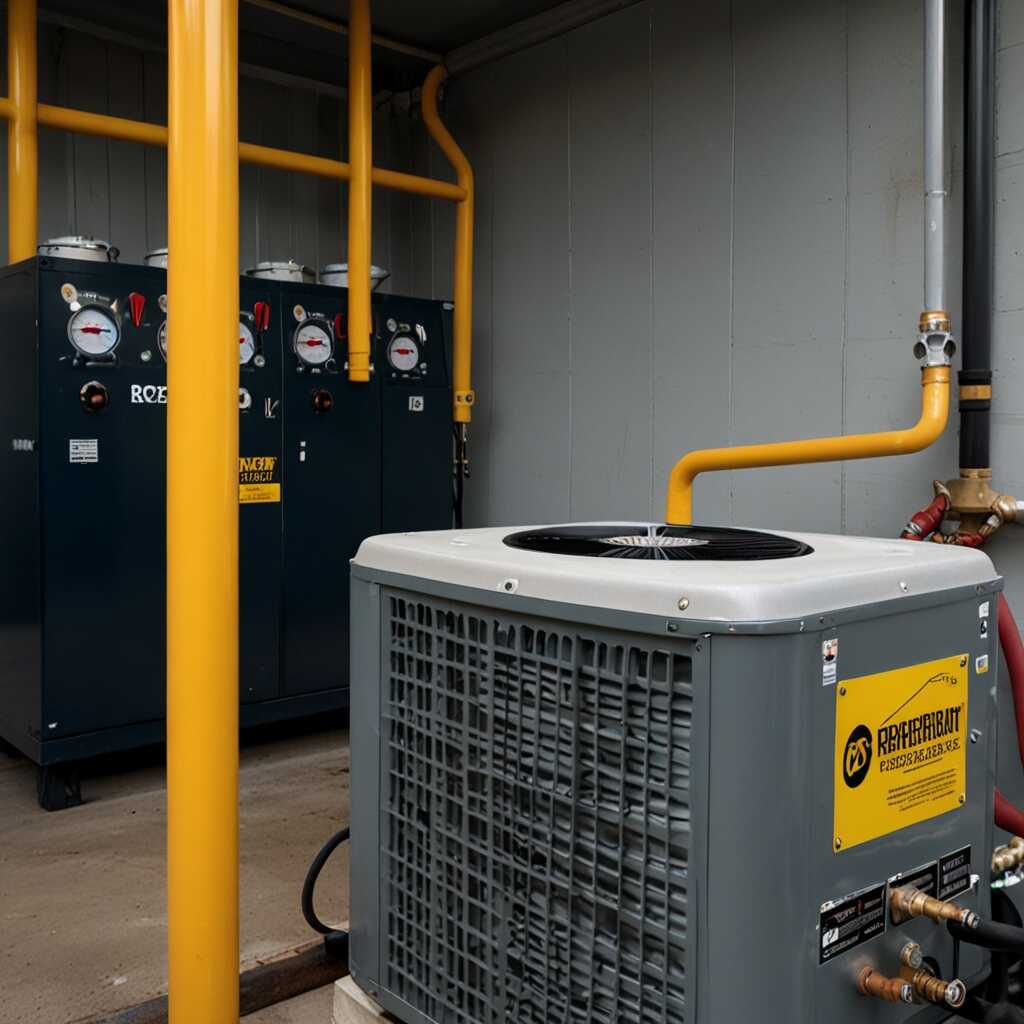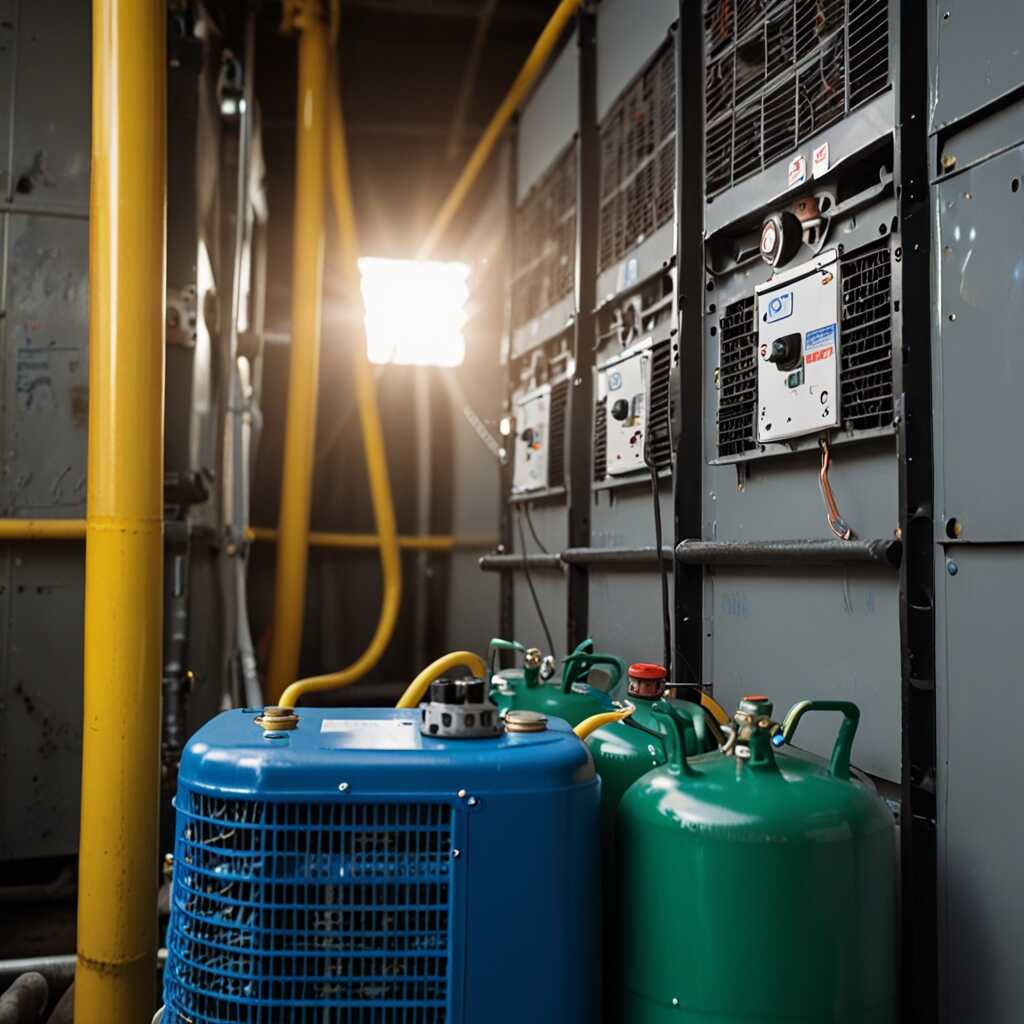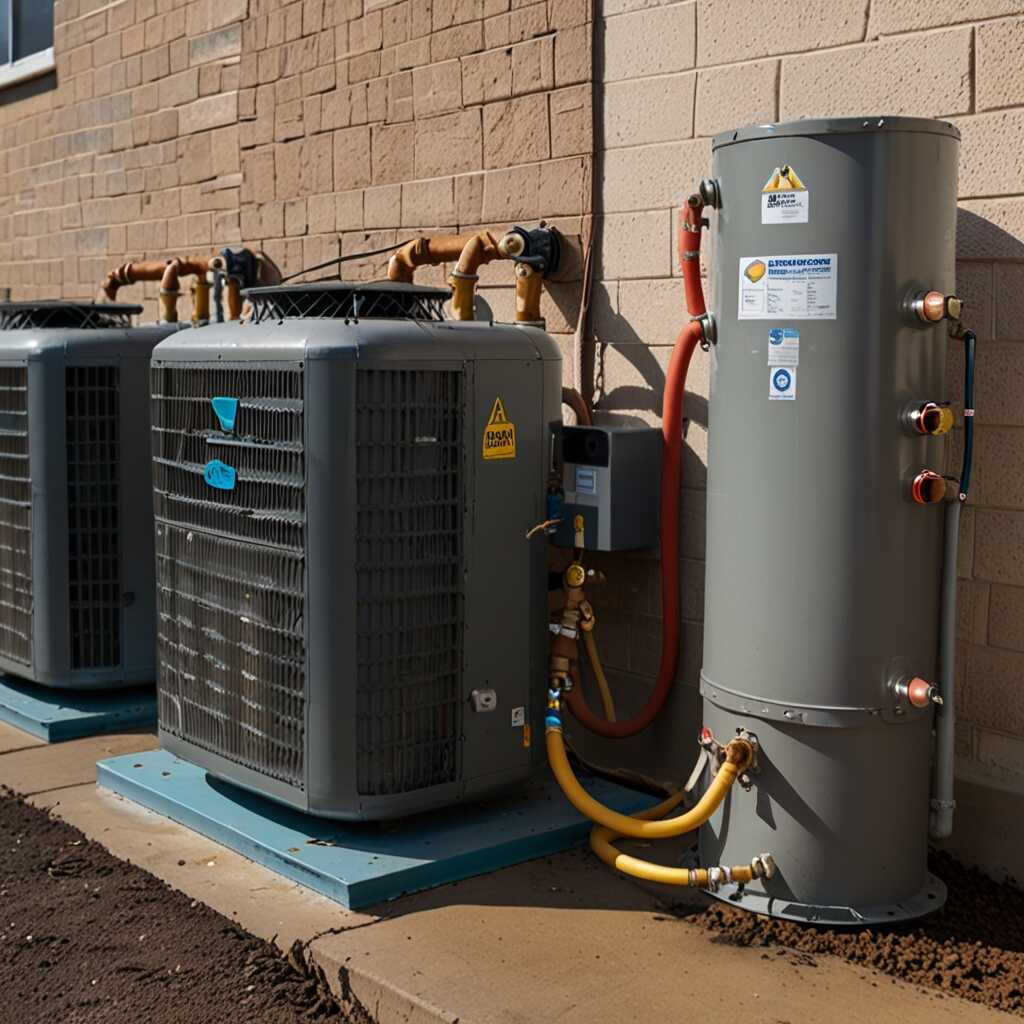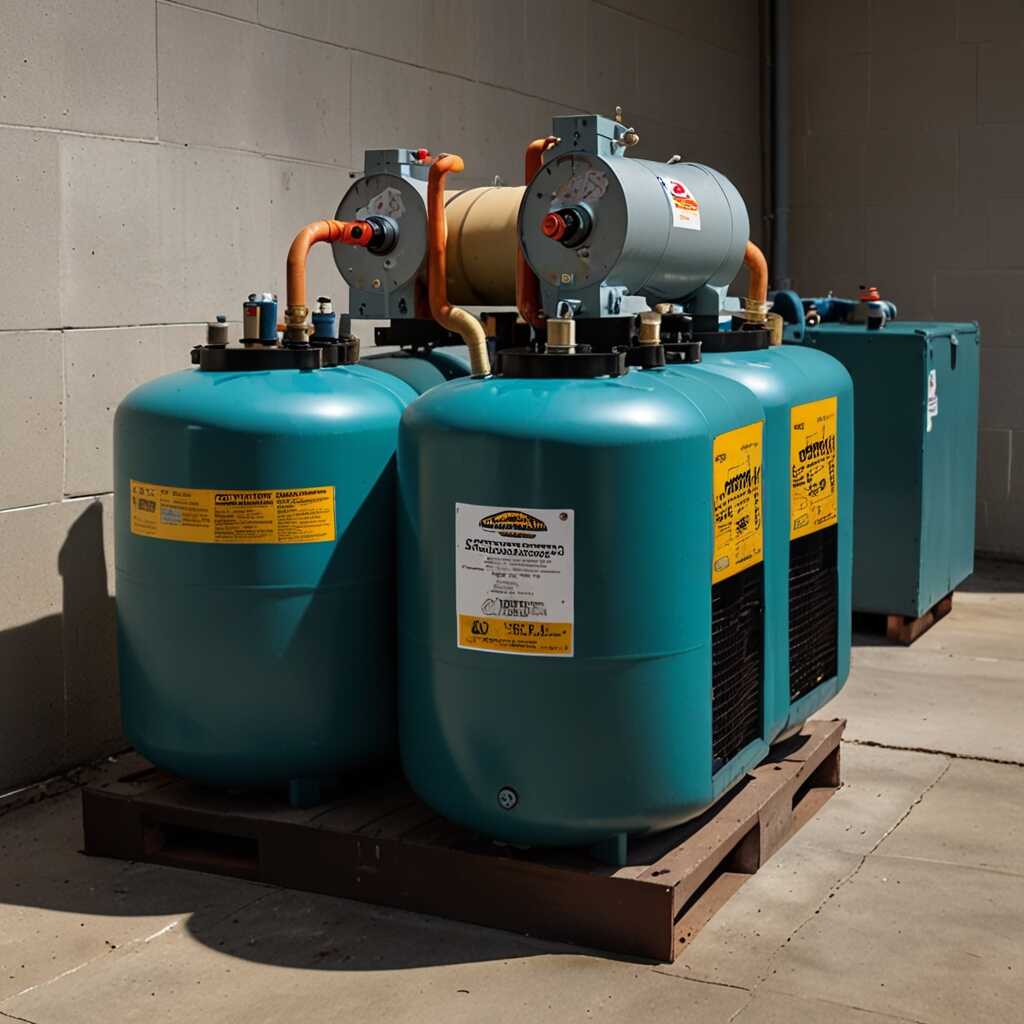The advantages of refrigerant recovery machines with temperature compensation technology are significant for HVAC professionals. These machines enhance the efficiency and performance of refrigerant recovery processes, particularly by adapting to varying temperatures during operation. Refrigerant Recovery Pro emphasizes the importance of this technology in promoting compliance with environmental regulations and improving the overall speed of recovery tasks. As experts in refrigerant recovery, they provide valuable insights on how temperature compensation technology can lead to better outcomes for technicians and the environment.
Overview of Refrigerant Recovery Machines in HVAC Systems
Refrigerant recovery machines play a crucial role in HVAC systems. They enable efficient refrigerant management and recovery by removing refrigerants from systems during repairs or maintenance. These machines help HVAC professionals comply with environmental regulations by recovering refrigerants instead of venting them. Key features to consider include high recovery efficiency, reliability, and built-in temperature compensation technology. The latest refrigerant recovery machines can achieve recovery rates exceeding 90%, ensuring minimal refrigerant loss and improved system performance. By providing efficient recovery, these machines enhance the overall reliability of HVAC installations, making them essential tools for technicians.
Key Features of Effective Refrigerant Recovery Machines
Effective refrigerant recovery machines incorporate several key features that enhance their performance. Temperature compensation technology significantly improves recovery efficiency by adjusting the recovery process based on ambient conditions. Modern machines also include user-friendly interfaces, sturdy construction, and reliable compressor systems. A good recovery machine is designed to handle multiple refrigerant types, providing versatility for different applications. These enhancements ensure that HVAC professionals can work more efficiently and safely, meeting both operational and regulatory requirements. With expert guidance, HVAC technicians can choose machines that deliver impressive results and help maintain high standards of refrigerant management.
Defining Temperature Compensation and Its Functionality
Temperature compensation in refrigerant recovery machines is a feature that adjusts the machine’s operation depending on the ambient temperature. This technology helps maintain optimal refrigerant recovery efficiency regardless of environmental conditions. It systematically ensures that recovery processes remain effective by compensating for heat fluctuations, thus enhancing machine performance. Different brands and models integrate this technology uniquely, leading to varying performance levels. On average, refrigerant recovery machines equipped with temperature compensation can show a recovery efficiency increase of up to 15%. This reliability in performance ultimately aids HVAC professionals in meeting regulatory compliance effectively.
How Temperature Compensation Technology Works
Temperature compensation technology operates by utilizing sensors that monitor ambient temperatures during refrigerant recovery. When conditions change, the machine adjusts its internal processes to maintain efficient performance. These adjustments can include modifying recovery rates and pressures, ensuring that even under challenging conditions, the machine operates at peak efficiency. Studies have shown that machines employing this technology not only comply with regulations but also enhance users’ experience by making refrigerant recovery easier and faster. Such practical features help technicians achieve more reliable results, making temperature compensation a vital aspect of modern refrigerant recovery equipment.

Improving Performance and Efficiency with Temperature Compensation
Temperature compensation technology in refrigerant recovery machines offers several advantages for HVAC professionals. It mitigates refrigerant loss during the recovery process. By adapting to variable environmental conditions, it ensures maximum efficiency. This technology enhances recovery speeds significantly when compared to standard systems. Research indicates that machines employing temperature compensation can improve recovery rates by up to 30% in extreme conditions. These features help HVAC technicians achieve compliance with environmental regulations while performing reliable and efficient operations.
Real-World Applications of Temperature Compensation Technology
In real-world settings, temperature compensation technology proves essential for HVAC systems operating under fluctuating conditions. It allows machines to adapt their performance based on ambient temperatures. This adaptability enhances refrigerant recovery efficiency. For instance, recovery machines can handle higher pressures and varying refrigerant types more effectively. Technicians report that using temperature compensation results in a smoother recovery process. These machines not only perform better but also reduce the risk of refrigerant loss, which is crucial for compliance with EPA regulations. Overall, the integration of this technology helps HVAC professionals deliver reliable and efficient service.
Statistical Insights on Recovery Equipment Efficiency
- Recovery machines can reclaim up to 95% of refrigerant in a system.
- Temperature compensation technology improves recovery rates by 30%.
- 95% of HVAC professionals report improved efficiency with modern machines.
- Machines with this technology can operate effectively in temperatures ranging from -20°F to 120°F.
- Annual growth rate for refrigerant recovery device market is projected at 7.5%.
- Over 50% of users notice reduced cycle times with enhanced temperature controls.
- More than 60% of HVAC technicians prefer devices with integrated temperature features.

Regulatory Compliance and Environmental Impact of Recovery Practices
This section addresses the various regulations affecting refrigerant recovery in HVAC. Key regulations include the Clean Air Act and EPA requirements prohibiting the venting of refrigerants. Machines with temperature compensation technology enhance compliance by ensuring reliable recovery rates. They help HVAC professionals retrieve refrigerants at varying temperatures, minimizing emissions. This technology significantly reduces the likelihood of non-compliance with environmental regulations. In instances where failure to follow regulations occurs, fines can mount to thousands of dollars, emphasizing the importance of using the right equipment. Temperature compensation has been proven to improve recovery efficiency by up to 30%, offering substantial benefits for both compliance and environmental sustainability.
Understanding Compliance with EPA Regulations
Understanding compliance with EPA regulations is essential for HVAC professionals. The EPA mandates strict guidelines for refrigerant recovery, including the need to capture and recycle refrigerants during maintenance. Temperature compensation technology allows for efficient recovery regardless of the refrigerant’s starting temperature. This feature ensures compliance while improving recovery rates. In demanding conditions, such as high ambient temperatures, these machines maintain reliability, enabling HVAC technicians to meet regulatory obligations without sacrificing performance. Therefore, investing in machines with this technology is not only a matter of efficiency but also a proactive step towards environmental responsibility and legal compliance.

Comparative Analysis of Temperature Compensation vs. Standard Recovery Machines
This section examines the key differences between recovery machines with temperature compensation features and standard recovery machines. Temperature compensation technology improves efficiency by adjusting the recovery process based on ambient temperature changes. This leads to higher reliability and performance, especially in variable conditions. Operational costs are often lower with machines that have temperature compensation due to reduced energy consumption and maintenance expenses, making them a smart choice. Research shows that these machines can achieve up to a 20% improvement in efficiency compared to standard models.
Deep Dive into Operational Costs and Efficiency Metrics
In terms of operational costs, recovery machines with temperature compensation provide significant savings compared to their standard counterparts. These machines are designed to optimize energy usage, providing a more reliable and efficient recovery process. When testing operational metrics, machines with temperature compensation often deliver lower energy bills, thus proving their worth over time. Maintenance costs tend also to be lower due to their sturdy construction and durable features, enhancing longevity. This means HVAC professionals can achieve great results with less frequent servicing, making these machines a very good investment for the future.
Key Advantages of Advanced Recovery Systems
- Enhanced efficiency leads to quicker refrigerant extraction and reduced job time.
- Temperature compensation technology adjusts automatically during extraction.
- Improved energy savings result in lower operational costs for technicians.
- This technology ensures compliance with environmental regulations.
- Fewer refrigerants released into the atmosphere help protect the environment.
- Devices with this feature allow safer refrigerant handling practices.
- Increased reliability leads to fewer breakdowns and service interruptions.

Tackling Common Refrigerant Recovery Challenges Faced by Technicians
HVAC technicians often encounter refrigerant recovery challenges like improper refrigerant disposal, slow recovery speeds, and compliance with regulations. Temperature compensation technology enhances efficiency by adjusting recovery rates based on ambient temperatures, ensuring reliable and effective performance. This feature allows technicians to operate in varying environmental conditions, improving the overall reliability of the recovery process. Machines with this technology can reduce refrigerant loss and ensure compliance with environmental regulations. The integration of such advanced features helps technicians handle each recovery task with ease.
Addressing Slow Recovery Rates with Temperature Compensation
Slow recovery rates can significantly hinder the efficiency of the refrigerant recovery process. Temperature compensation technology helps by automatically adjusting the recovery speed based on the refrigerant temperature. This adaptability ensures that the machine operates within optimal parameters, leading to faster recovery times. Technicians can expect more consistent and impressive results, even under challenging conditions. This technology is vital for maintaining compliance and providing safe, effective refrigerant recovery. Reliable equipment like this enhances workflow and boosts technician confidence in their daily operations.
Guidelines for Selecting the Best Refrigerant Recovery Machine
When selecting a refrigerant recovery machine, prioritize essential features like temperature compensation, machine capacity, and durability. Temperature compensation helps maintain efficiency across varying conditions, ensuring more reliable results. Consider manufacturers that offer proven reliability and sturdy construction. Reviews can provide insights into how different brands perform in real-world scenarios. The ideal recovery rate varies, but a recommendation is at least 0.5 to 2 pounds per minute, depending on the machine’s capacity.
Key Features to Look for in Recovery Machines
Choose recovery machines equipped with advanced temperature compensation features. These machines handle fluctuations without impacting performance. The benefits include faster recovery times and reduced refrigerant loss. Durable construction enhances longevity, providing a reliable investment for HVAC professionals. Additionally, machines with a higher capacity allow for efficient handling of various refrigerant types. This increases productivity and ensures compliance with environmental regulations. Make use of reputable brands like Refrigerant Recovery Pro that emphasize quality and performance in their offerings.
Relevant Brands and Their Applications in HVAC Services
- Brand A offers high-performing models, ideal for large-scale operations.
- Brand B focuses on small-scale systems, providing affordability for new technicians.
- Brand C is preferred for its portability, making it user-friendly for on-site jobs.
- Brand D specializes in energy-efficient models that comply with regulations.
- Commercial HVAC firms benefit from high-capacity machines with advanced features.
- Small businesses often choose cost-effective devices without compromising quality.
- Dedicated HVAC trainers emphasize the importance of reliable recovery units in educational settings.
Emerging Trends and Innovations in Refrigerant Recovery Technology
Anticipated advancements in refrigerant recovery technology, especially related to temperature compensation, promise substantial improvements in efficiency. Innovations will include enhanced sensors for precise temperature readings, ensuring optimal refrigerant recovery rates. HVAC professionals can expect systems designed for better reliability and performance. A shift towards automation will allow for more streamlined operations, reducing labor costs. As regulations become stricter, incorporating temperature compensation technology ensures compliance and enhances equipment performance.
Impact of Temperature Compensation on Efficiency
Temperature compensation will significantly impact the efficiency of refrigerant recovery systems. These systems can handle varying temperatures without compromising refrigerant quality. Enhanced sensors will provide real-time data on refrigerant states during recovery, optimizing performance. This technology will lead to faster recovery times and reduced waste, beneficial for both the environment and business costs. HVAC professionals will find that investing in these improvements enhances their capabilities, ensuring they remain competitive in the evolving HVAC industry.